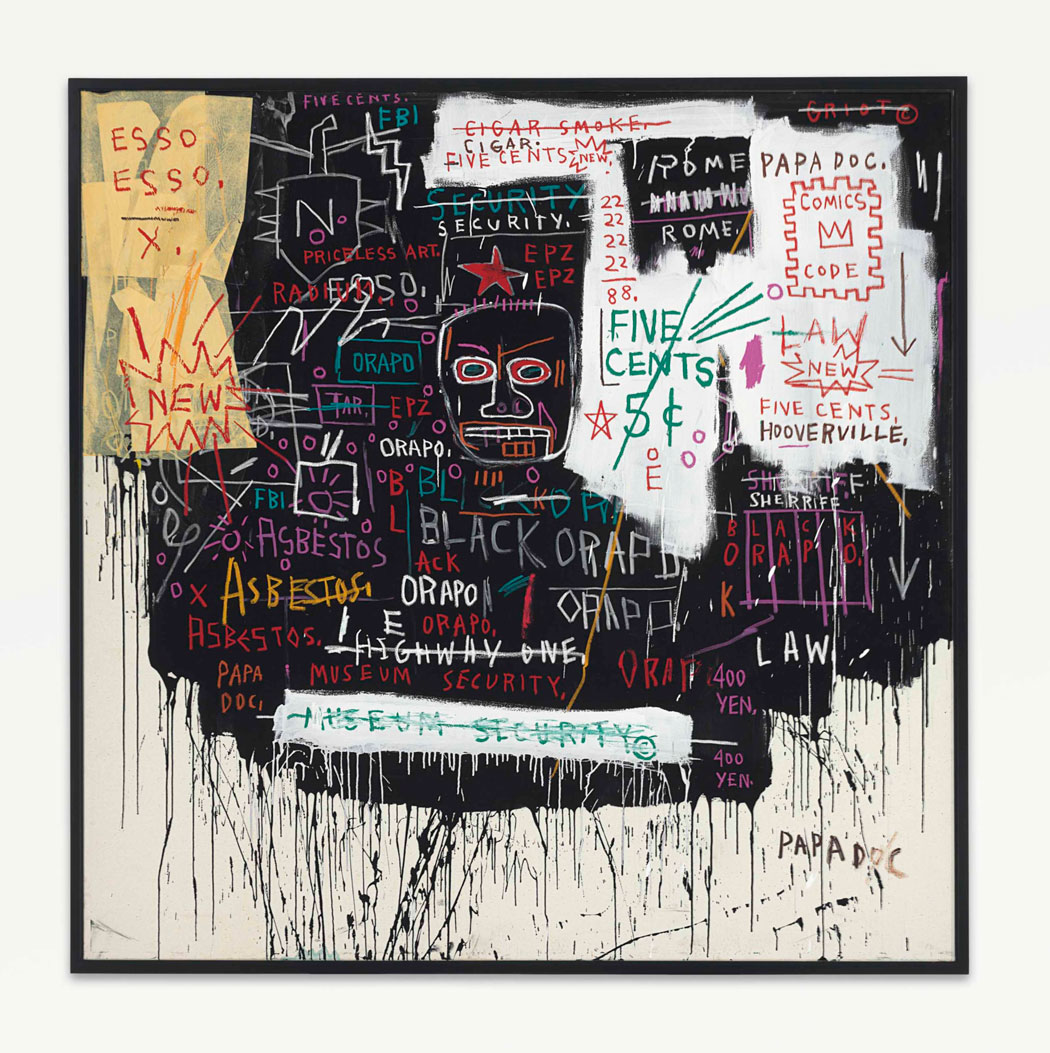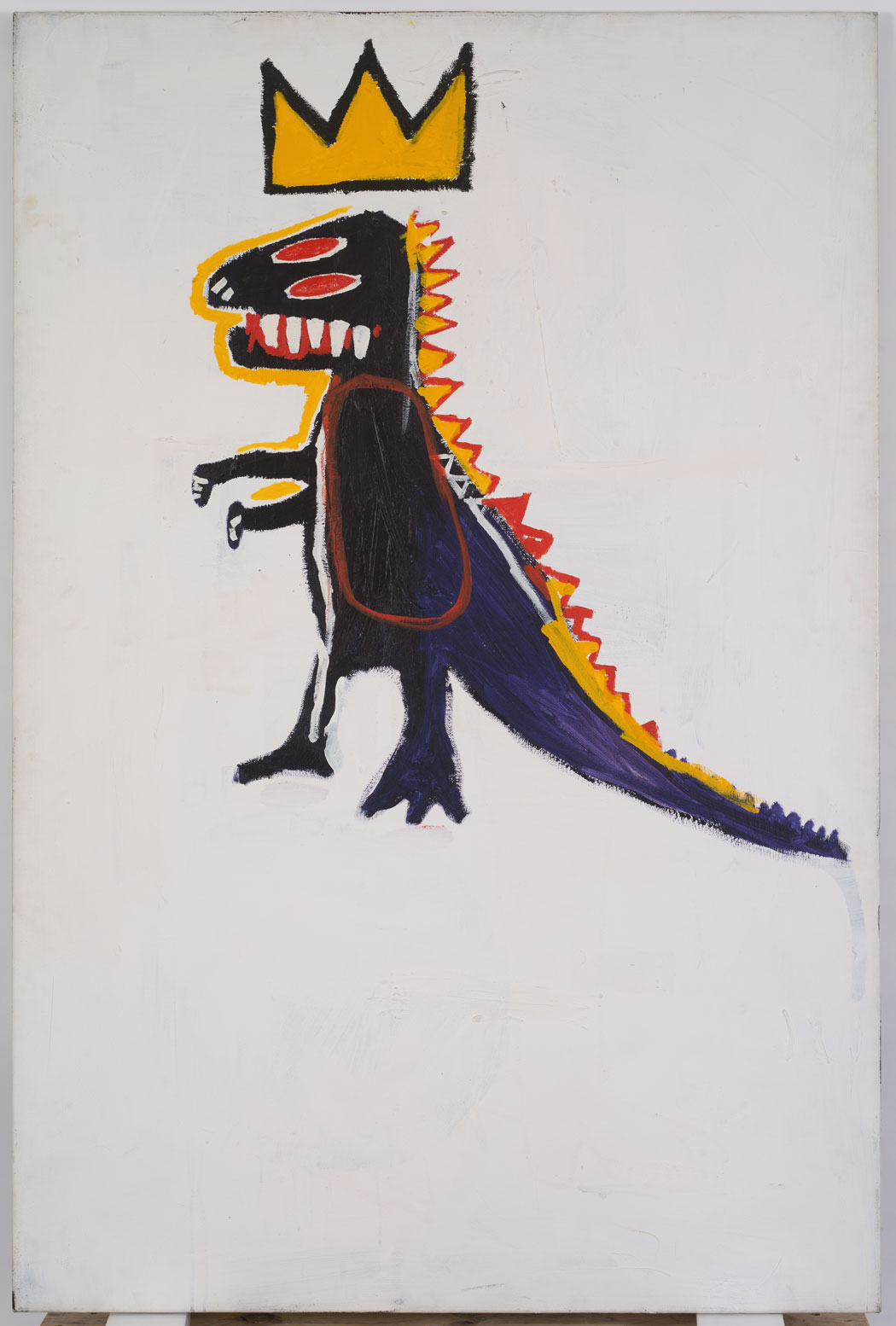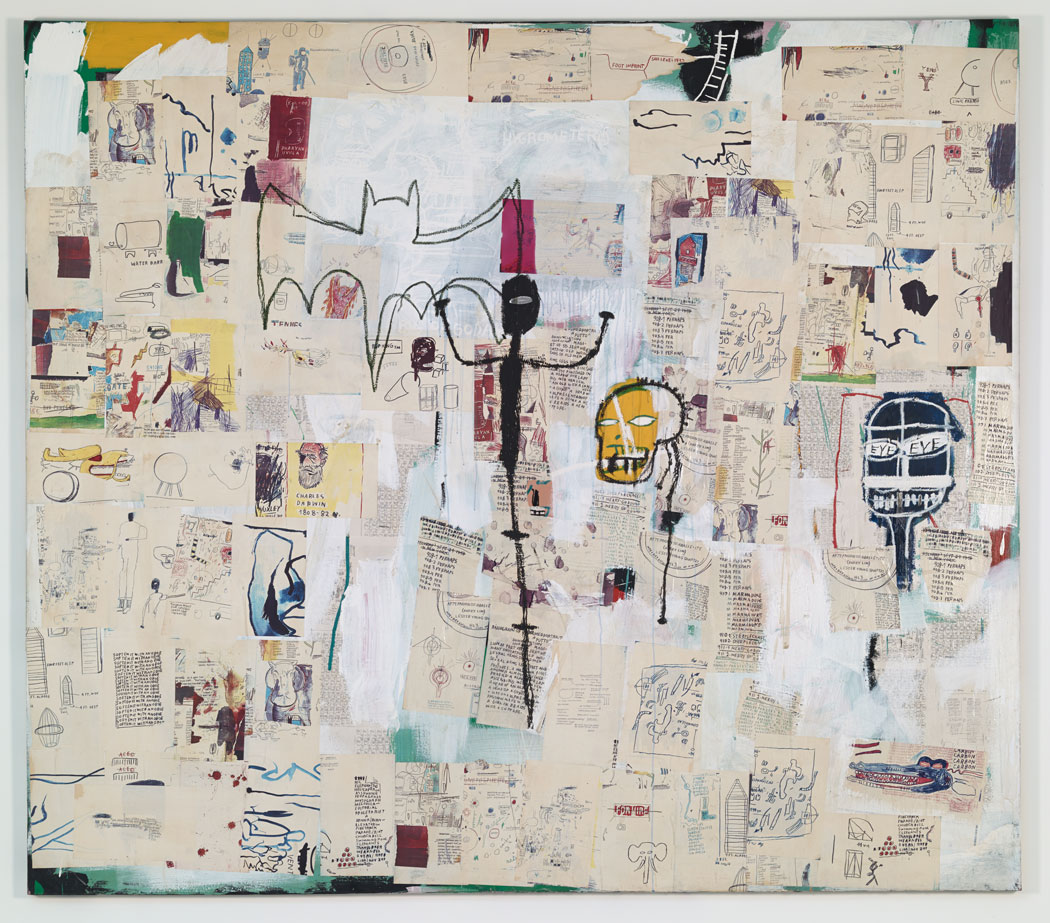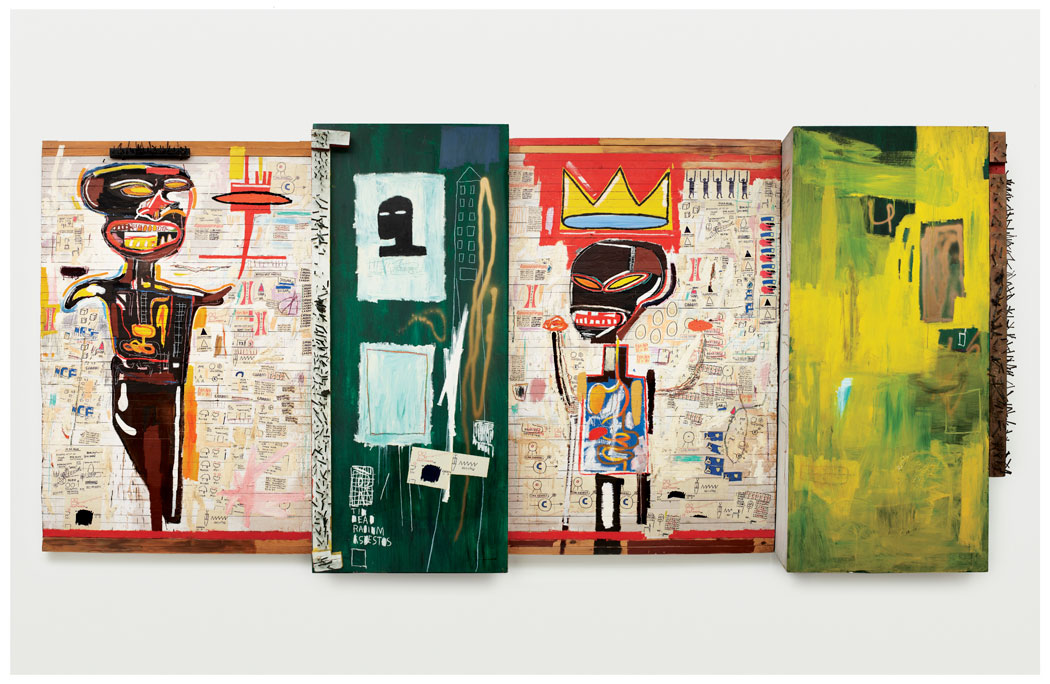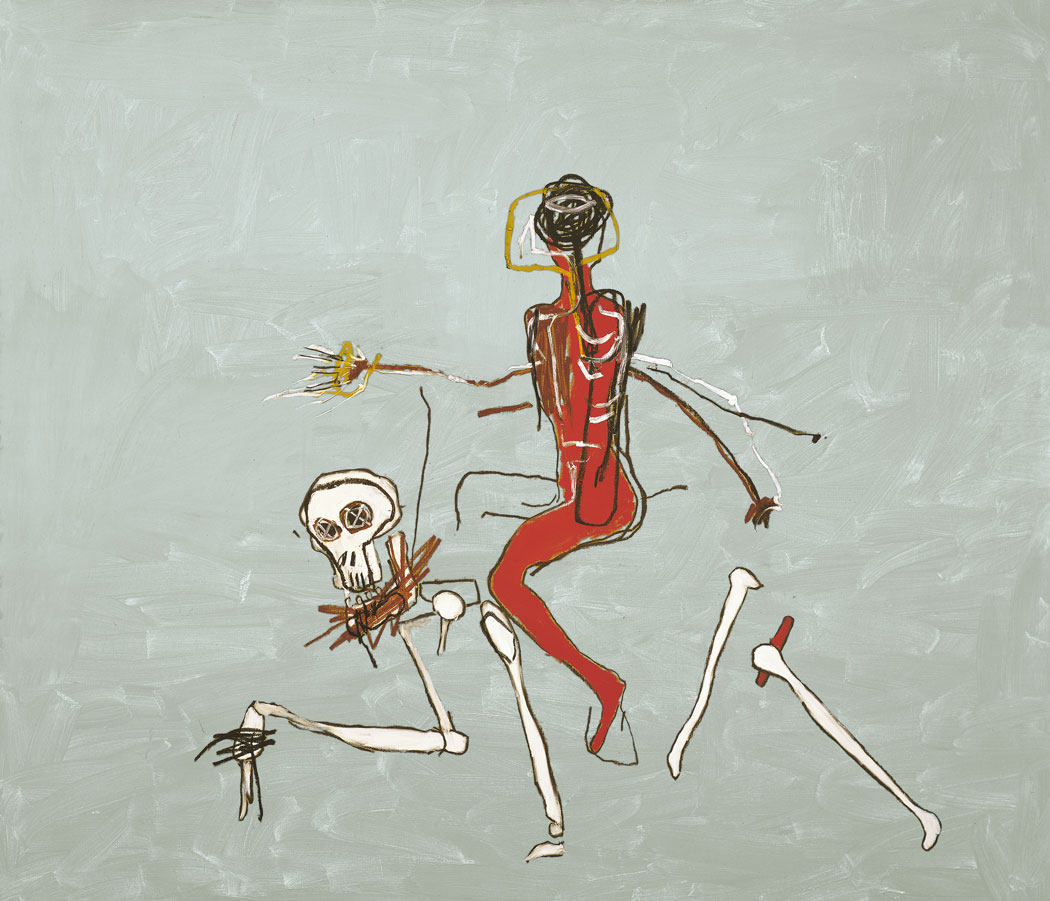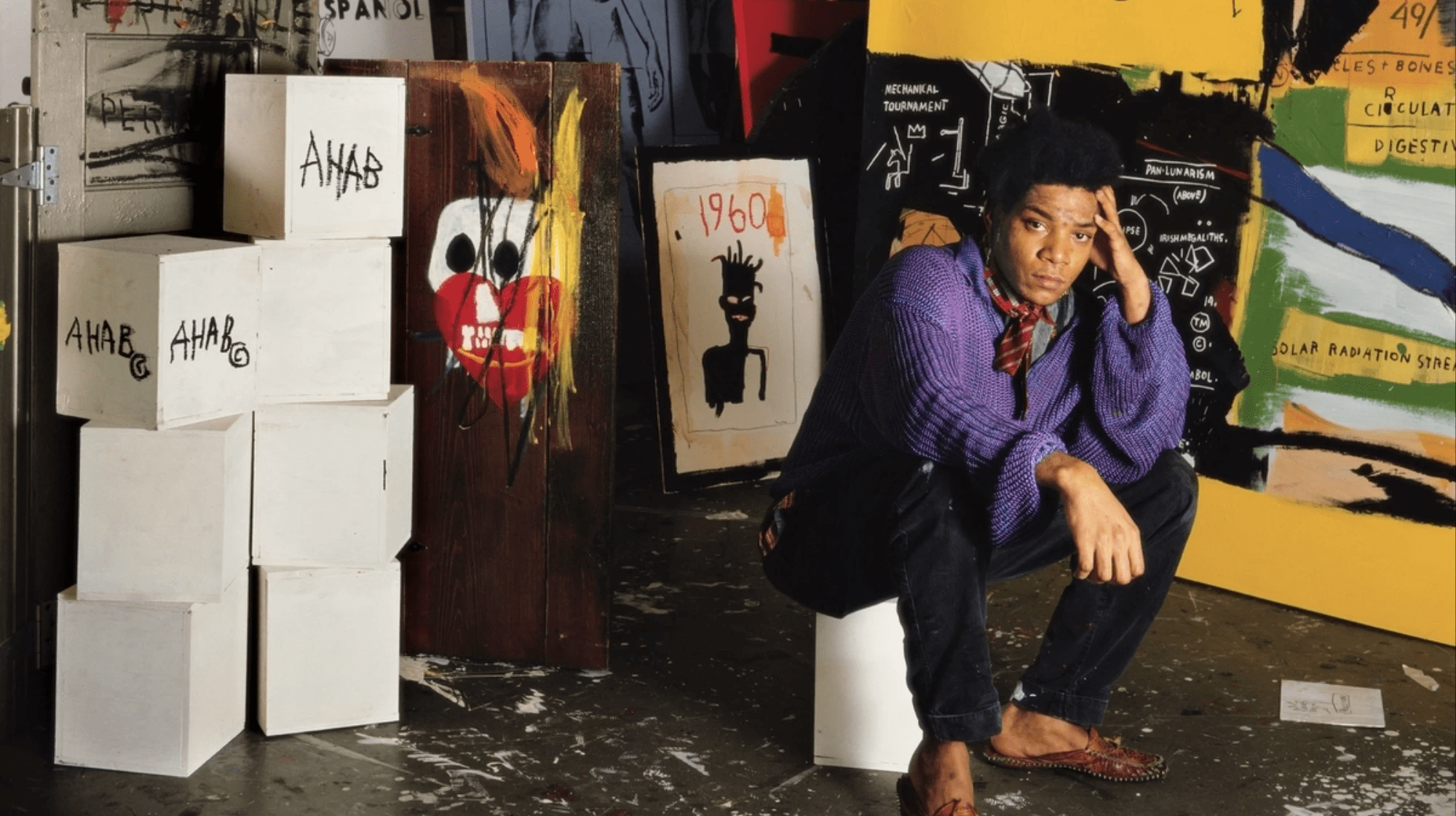This article originally appeared on i-D France.
Some artists are so omnipresent, in pop culture and in our minds, that we forget the sheer force of their work when it meets our eyes. Jean-Michel Basquiat is one of those individuals who transcend generations, his art and his personal story resonating ever stronger as his death recedes further into the past. Born in 1960 and dead by the age of 28, he was a sort of comet whose tail continues to light up the eyes of the art world — and the world in general. He’s inspired us; he’s been much copied. He’s been the object of homages, documentaries, innumerable books — and yet his work is always at its most palpable when right in front of us. This week, his work will be put on display — until 14 January 2019 — at the Fondation Louis Vuitton, as part of the double exhibit “Jean-Michel Basquiat – Egon Schiele.” The show is dedicated to two masters of their art both dead at 28 — two virtuosos, two artists in love with bodies and subjectivity; a duo of wondrous artists at opposite ends of their century.
Diving into Basquiat’s work is as exciting as it is dizzying; imagine the difficulty of curating it for an exhibition. Ten years. Ten short years for thousands of canvases and even more drawings. That’s the career you have to untangle. Basquiat’s explosive productivity is a gold mine of subjects, practices and undertakings. It’s the fruit of an era (the 1980s) and the artistic effervescence of a city (New York), but it’s also Basquiat’s unique perspective of the world which continues to follow us, serving as a key to understanding the blazing array of contradictions present in his work. On the various floors of the Fondation Louis Vuitton building designed by Frank Gehry, you are struck by the heavy weight of art history. To head into the first of the 11 galleries dedicated to Basquiat’s works (pulled from private collections) is to enter a world where nothing separates us from what Basquiat once wanted to tell us about himself and his surroundings.
It was upon the doors of lower Manhattan that Basquiat first expressed himself, beside Al Diaz, a famed graffiti artist of the time. At that time he signed his work “Samo” (“same old shit”), until he killed his urban poet avatar in 1979, scratching into a wall “Samo is dead.” But Jean-Michel Basquiat was born. This exhibition is a voyage to the center of all that came after. As retrospectives go, this one seems almost futuristic, given how much its aesthetic and messages are precursors. Each piece tackles a certain theme; as you continue, you are struck, open-mouthed, at the versatility and perspicacity of this artist who was then only 20 years old. It’s the inspiration he took from the street, from graffiti school, that will leave you wordless. There’s his glued-paper technique wherein drawings superpose themselves over paintings; his canonization of athletes, musicians, combatants and convicts, often black; his plays on words, signs and pictograms, forming a unique “visual rap.” There’s the virtuosity of his canvases, broken doors and planks sometimes replacing traditional ones. Then there’s his use of music, his love of hip-hop, seen in the visual sampling in certain works and the jazz-like improvisation of others. And there are the elements he borrows from African culture, from certain deities, from the Western African griot figure — of whom Basquiat was perhaps one of the loveliest heirs, whether he ever knew it or not.
It’s impossible to be unmoved at the physical immensity of these paintings, the intensity of their creativity — the work of a guided by the sense of being on a mission. For Basquiat, painting was a drive, an obsession, an urgency motivated not by the need to leave a trace behind, but rather by the simple desire to try — the need to understand the traces the world itself was leaving. He was driven to bring back figurative art at a time when minimalism reigned, and more importantly still, to promote black artistic expression at a time when its absence from museums was glaring. As you emerge from this long exhibit — which you wish wouldn’t end — you have to wonder what 20th century art would have been without this gifted, possessed being. And you hope his wonderful cosmic shadow will continue to hover above us for a very long time to come.
